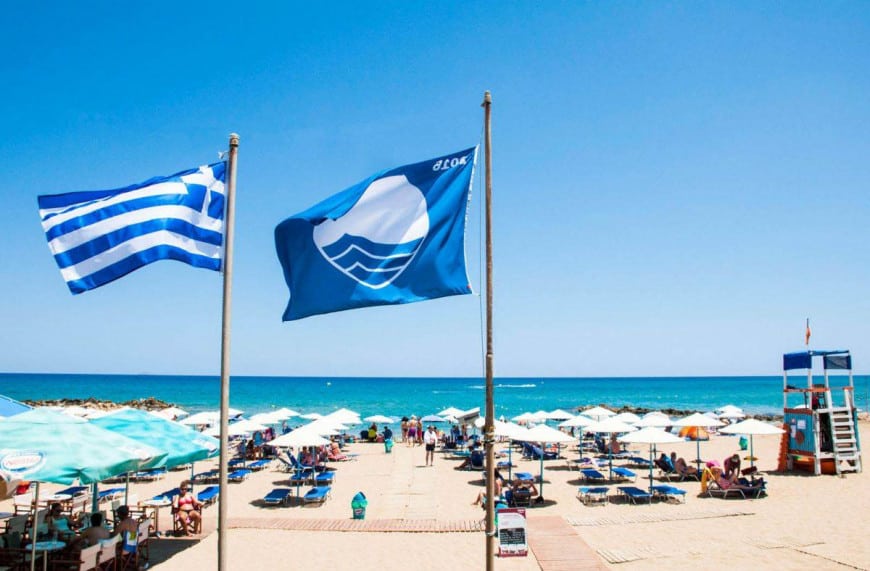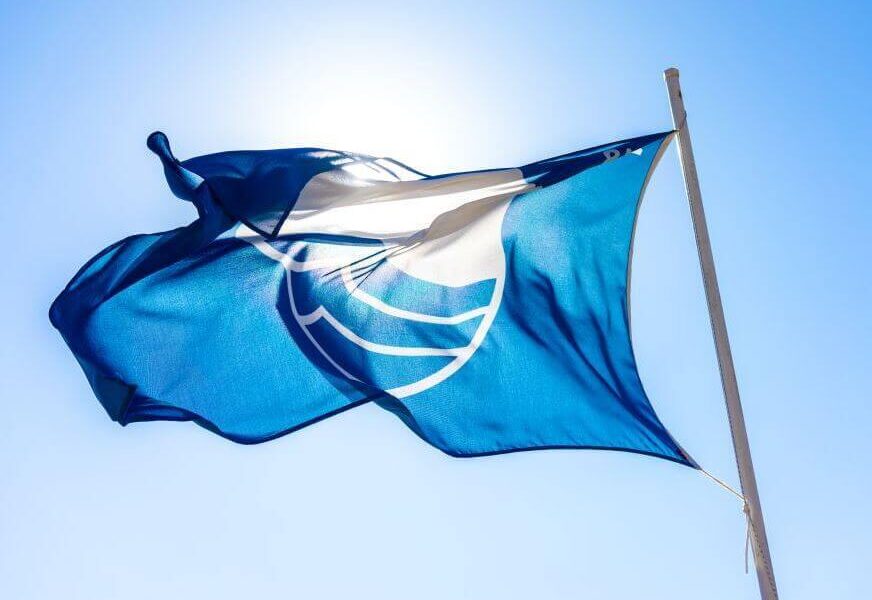617 Greek beaches, 18 marinas and six tourism boats were awarded the Blue Flag for 2023, 36 more beaches than last year. This is an all-time high record and the first time Greece has exceeded 600 awarded beaches.
Out of 52 countries participating in the Blue Flags program, Greece owns 15% of the awarded beaches.
The prefecture of Halkidiki emerged first in Greece with 94 flags.
The committee awarded 4,212 beaches, 710 marinas and 120 tourist boats worldwide.
The region of Halkidiki in northern Greece ranked first domestically with 94 blue flags, followed by Rhodes with 57 and Lasithi on Crete with 48.

The Meaning of the Blue Beach Flag
The blue flag is an international symbol for beaches that meet certain safety, cleanliness, and environmental awareness standards. These standards are set by the Foundation for Environmental Education (FEE), and beaches that meet the criteria are allowed to drop the blue flag.
In other words, the blue flag is a certificate of the environmental quality of the beach. It may seem like a marketing feature at first glance, but there are many tests and criteria the seashore area has to pass to obtain this mark and none of these beaches make money off their visitors.
What does a blue flag mean at the beach?
The beach or marina must pass 32 certain tests to have a Blue Flag.
A beach awarded the blue flag meets the organisation's environmental management standards. These standards are for water quality, safety, and public environmental education.
The Blue beach flag program has been run since 1987 by a non-profitable organization, the Foundation for Environmental Education (FEE). It now includes over 5,000 certified beaches and marinas across 48 countries, with Spain having the most blue flags awarded.
See all the beaches HERE

